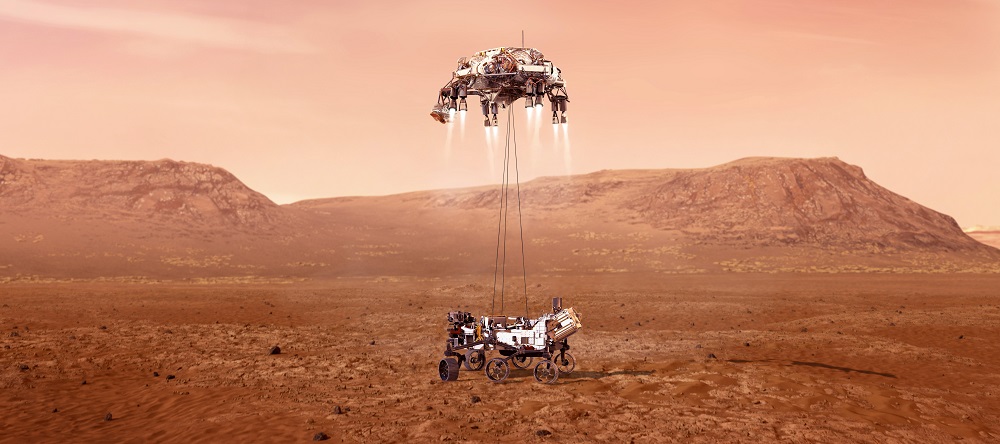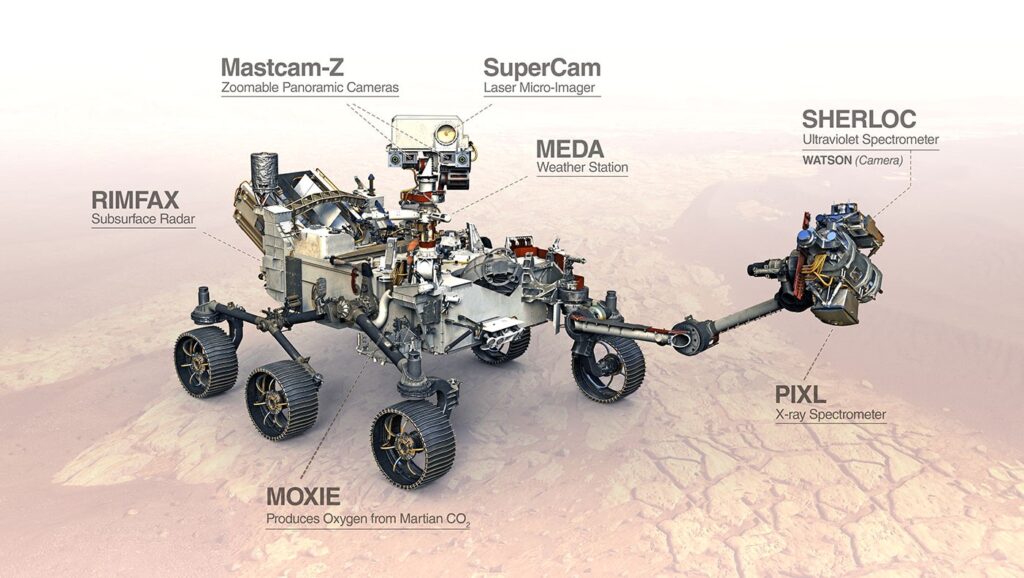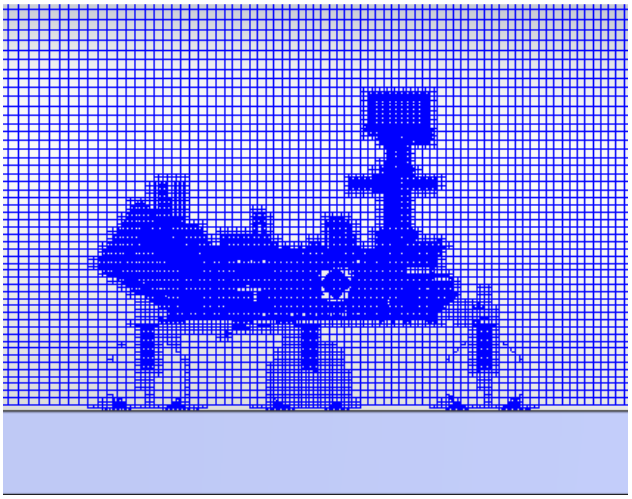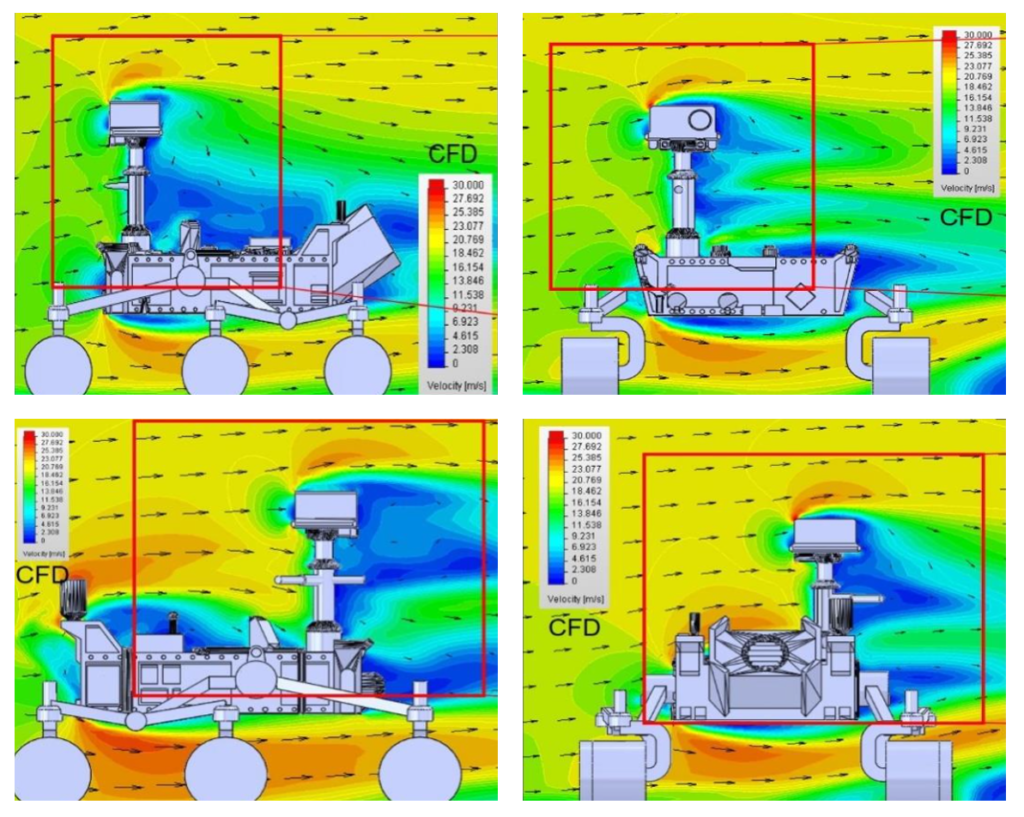Perseverance: what’s the weather on Mars?

Mars weather station and Simcenter FLOEFD
On February 18, we witnessed the amazing feats that scientists and engineers can achieve with the perfect landing of the Perseverance Mars rover. I was watching the landing on a video feed from NASA with my seven year olds. They sat glued to the TV listening to the commentator giving the updates on what was occurring and asking me some amazingly complex questions about what was happening and what the different parts of the rover were for. I answered their questions the best I could and their curiosity continued to grow. Their focus then shifted to Mars itself and what it was like there. I explained that it was a harsh environment and the density of the atmosphere is much less than on Earth. I explained that the rover had instruments on it to tell what the environment was at any point in time. This is where I got to impress them! I told them that one of the software tools I worked with was used to design the weather station on the Perseverance rover, Simcenter FLOEFD.

The rover has seven instruments on board. One of which is the Mars Environmental Dynamics Analyzer (MEDA), a weather station that will be in charge of monitoring the Martian atmosphere. This was developed by Centro de Astrobiología (CAB, CSIC-INTA) in Spain.
MEDA: give me the weather, dust and radiation report on Mars
With a total weight of about 5.5 kg, MEDA consists of seven sensors. These sensors will be used to measure the direction and speed of the wind, the temperature of the soil and the air, the relative humidity, the atmospheric pressure, the incident solar radiation in the ultraviolet, infrared and visible ranges, the properties of the dust in suspension. Additionally, it has a camera to take pictures of the Martian sky (including clouds).
The main objective of the Mars weather station is the characterization of the Martian atmosphere. The data will help to improve and refine Martian atmospheric models, which will allow prediction of the weather and will be of great value in preparing future manned missions. They will also serve to study in depth the role that Martian dust plays in the chemical processes that take place on the surface and in the atmosphere, and that affect temperature and climate. It will also aid in studying radiation from the sun and space, which can alter the traces of any past life in the rocks of Mars. Finally, they will provide information on how the exchange of water vapor occurs between the soil and the Martian atmosphere.1
Test chambers that simulated the Martian atmosphere were used to test the MEDA itself, but it was impractical to test the devise as it would be mounted on the rover and the effects of the rover structure on the flow around and past the sensor. This is where CFD became critical. It can be used to create a virtual environment and simulate the impact it has on the equipment.
Studying the flow field around Perseverance
INTA chose Simcenter FLOEFD to conduct their CFD simulations. The purpose of these simulations was to study the flow field around the Perseverance rover as a whole and how the changes to the flow field affected the performance of the MEDA sensors. The INTA engineers set up the external boundary domain and initial conditions to recreate the same atmospheric conditions of Mars.
The Simcenter FLOEFD simulations were generated with laminar and turbulent flow features activated. They also modeled the conduction in solids, free and forced convection as well. Simcenter FLOEFD solves the Favre-averaged Navier-Stokes equations to predict turbulent flows. To close this system of equations, the software uses transport equations for the turbulent kinetic energy and its dissipation rate. The mesh grid was modeled using the Simcenter FLOEFD SmartCells. This mesh utilized 2.7 million total cells including solid, fluid and partial cells, which were manually refined in the test area of interest resulting in a locally rectangular mesh for solving the governing equations on it.

A simplified 3D version of the NASA rover was utilized and the area of interest is the effect of the local perturbation around the rover mast where the two wind sensors designed and manufactured by the MEDA team are located.


The fluid computational domain size for the simulations is 80x78x40 cm3. A faithful reproduction of the rover geometry was achieved using a fine mesh with a 5 mm cell size. In addition, six local meshes were used to refine the solid cells in the rover for the more complex shapes such as the wheels and supports, the mast and camera. The resulting Cartesian mesh consists of 2.7 million cells, which include 1.6 million fluid cells, 800,000 solid cells and 300,000 partial cells. Figures 3 and 4 correspond to rover solid cells and fluid cells around the rover, respectively. The atmospheric conditions were set with a pressure of 7mbar, a temperature of 243K and the Mars atmospheric fluid properties. Wind speed and direction were set for each individual case that was studied.
The computation time varied from 6 hours to 10 hours depending on the wind speed and direction for a 24 core server.
Figure 5 shows the flow field velocity maps obtained by Simcenter FLOEFD. The streamlines and vectors overlayed on the maps indicate the flow direction. Color scale legend represents the local velocity magnitude. The flow structure is very similar in both cases. Upstream, the streamlines are slightly curved (α= 5º) by the presence of the rover vehicle modifying the velocity received by the sensor booms, as previously demonstrated by the flow visualization. Downstream of the mast, the flow is separated as typically corresponds to the wake of bluff bodies.

INTA were able to leverage Simcenter FLOEFD to provide them with the simulation results that gave them the confidence that the MEDA sensor would perform as it was expected to once it arrived on Mars as part of the NASA Perseverance Mars Rover.
Congratulations to the entire team at CAB, CSIC-INTA in Spain as well as all the other teams that worked on all aspects of the rover! They have amazed and intrigued not just my two seven year olds but scores of others from all over the world of all ages.



